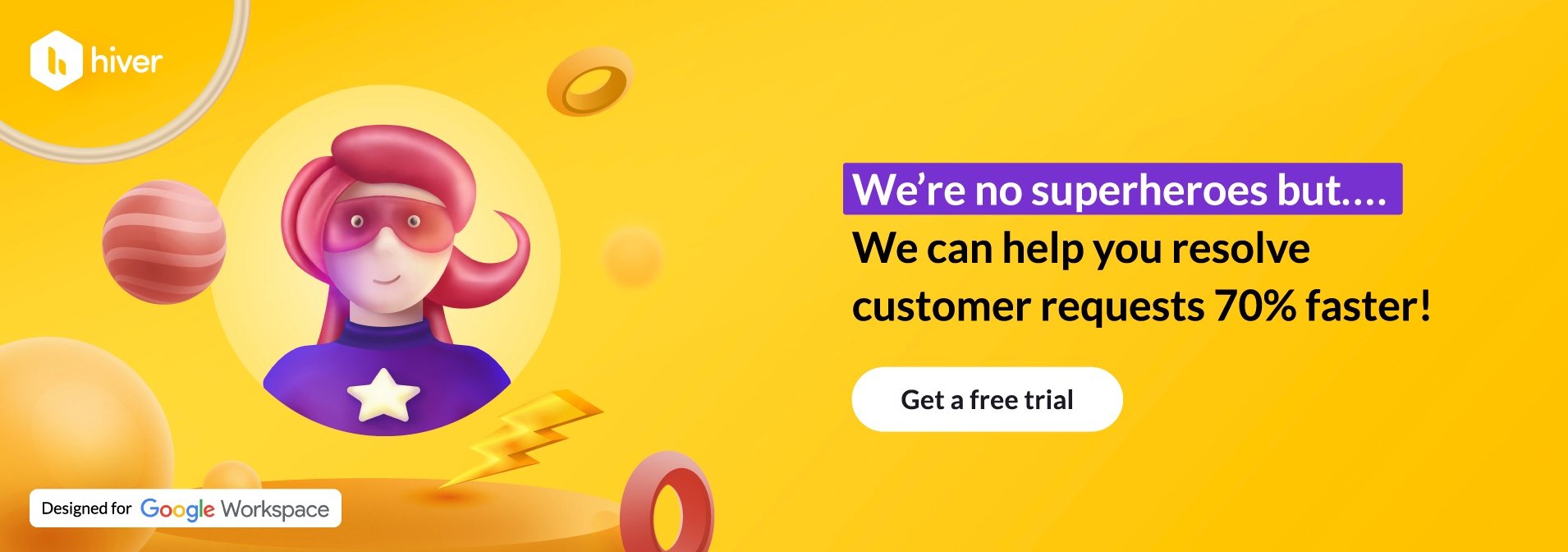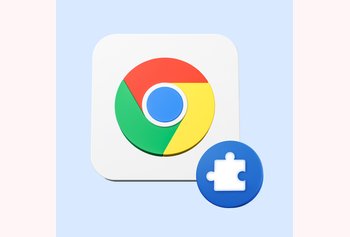
Table of contents
8000+ teams use Hiver to delight their customers!
The Complete Guide to Building a Customer Service Strategy

Table of contents
Customer Service Managers, are you happy with your current customer service strategy?
Are you delighting your customers?
Is your team excited and on board?
Or is it time to make a few tweaks?
Whether you’re starting from the ground up, strengthening your current approach, or tossing your current plan completely and rebuilding, you do need an actionable and effective customer service strategy.
What does that mean?
A solid customer service strategy is one that will help your reps handle all your customer service interactions — throughout the customer journey — with the ultimate goal of increasing customer happiness.
But why does having a plan matter?
Without a customer service vision for your organization, easily understood guiding principles, or a strategy for collecting feedback, measuring results, and executing, your customer experience is unlikely to improve.
And giving your customers a great customer service experience has many proven benefits, including:
- More customers and more conversions
- Increased customer loyalty and retention
- Higher sales, including higher average order value (people spending more per purchase)
- More word-of-mouth recommendations and positive online reviews
- Lower marketing costs
- Better engagement and more brand trust
- Easier problem resolution and crisis management
Sounds like something every organization can benefit from, don’t you agree?
It’s within your reach. Read on to learn how to create your own customer experience strategy.
Table of Contents
- The importance of building a customer service strategy
- Can your company really afford to provide excellent customer service?
- How to create a customer service strategy?
- Measuring the success of your customer service strategy
- Conclusion
The importance of building a customer service strategy
The benefits of a customer service strategy can seem hard to quantify, outside of simply being the right thing to do. Not only are the benefits quantifiable, but they’re also significant.
Harvard Business Review (HBR) studied two $1+ billion businesses to see exactly how significant it is. The first business was transaction- (sales-) based. Most retailers fall into this category. In this scenario, happy customers spend 140% more than those who had the worst customer experiences.
The second business HBR studied was subscription-based. The difference here was also striking. The study found that in a subscription model, their least-satisfied members will probably stay a little over a year. On the other hand, the best-satisfied members are likely to stick around for an additional six years.
Wouldn’t you love that kind of loyalty? And could you even make that happen?
You can. Start here.
1. Create memorable customer experiences
In a recent study, PwC found that customer experience influences purchasing decisions for 73% of respondents.
And in this case, the little things matter. They are exactly what makes a memorable experience.
When customers feel good about brand interaction, they not only feel good about your product, but they also feel good about buying from your company specifically. Personalizing the experience (say, for example, by keeping track of buyer preferences),addressing your customers by name, sincerely showing appreciation, and being polite and considerate — all make a positive difference. If you can put a smile on their face, you have hit a memorability home run.
Which leads to definite competitive advantages for your company.
2. Build a powerful brand differentiator
You might be tempted to brush off all these seemingly insignificant actions or even skip them altogether when times are tough. But that would be a mistake. Most of these “little things” cost nothing, and yet they make a huge difference. At times when your competitors are cutting corners, you can stand out. Customers do notice your extra effort, so the good feelings add up over time. Customers will not only keep coming back (and happily pay more for the experience!),but they will also tell everyone they know about you. Powerful stuff.
Still, you may be hesitant.
Can your company really afford to provide excellent customer service?
One of the biggest objections to setting high customer service standards is the anticipated expense. But the truth is, strong customer service strategies actually save companies money.
That’s because it’s costly to appease a dissatisfied customer. It takes time to deal with customer issues, really listens to them, propose solutions, and make sure they are happy in the end. Not to mention the expenses of replacing and shipping products or the intangible costs of bad publicity or poor online reviews.
As proof of the money-saving potential, cell phone company Sprint reported that they were able to cut customer care costs by 33% as a result of focusing their efforts on improving customer experience.
So now that we’re clear on the benefits, let’s walk through the process.

How to create a customer service strategy?
Building your customer service strategy is straightforward if you follow these steps.
1. Get the whole company on board
Your first (and more important) priority is to make customer-centricity your company-wide goal.
Every person in every department must commit to putting customers first — not just the helpdesk or the customer service department. Here’s why.
Nearly every department in your organization touches customer experience in some way, even if indirectly.
That includes your back-office systems. If accounting or purchasing, or IT has issues, you’ll have trouble presenting a seamless experience to your customers.
Even though your customers may never interact with anyone from shipping or marketing, they will notice and appreciate quick delivery and beautiful packaging. They may connect with product support for questions, and more technical issues may involve engineering. They may have questions on their billing statements, and accounting should know right away if there’s a system problem or UI quirk that needs to be addressed. Customers will visit and engage with your website as well as your social media profiles and more.
Hence, if you have an IG business profile, get followers to spread the reach of your brand and attract potential customers.
A shipping clerk who keeps your customers top of mind will think more about packing carefully so items survive the journey, whereas someone who is focused only on cutting costs or saving time might cause more damaged goods returns.
A marketing manager who puts customers first may come up with more flexible choices, say, for example, offering bi-weekly or quarterly plans for those who don’t need as much product or who are on a tighter budget.
Every interaction and experience your customers have with your brand should leave them feeling satisfied — most importantly — valued.
2. Craft a clear vision for customer experience
It all starts with a customer service vision — a statement or set of statements that clearly point everyone in your company toward the same guiding principles. You’ll then take those principles and use them to describe the experience you want to create for every customer.
A compelling vision is aspirational. It serves as a clear guide for everyone in the company for how you want customers to experience your brand — and especially how you want them to feel.
Here are a few examples:
- “At American Express, we have a mission to be the world’s most respected service brand. To do this, we have established a culture that supports our team members so they can provide exceptional service to our customers.”
- “In-store or online, wherever new opportunities arise, Nordstrom works relentlessly to give customers the most compelling shopping experience possible.”
- At Disney, all cast members share a Common Purpose: to “create happiness.”
3. Map your customers’ journey
Customer expectations are higher than ever. Top companies like Google, Apple, Amazon, Uber, and others have raised the bar. So how can you compete?
It starts with defining your customers’ journey and associated touchpoints.
You can think about it this way – a journey fulfills a customer’s need. For example, they may want to buy a new product, complain about something that is broken, make a suggestion, fix an error, or correct a bill. That’s their basic need.
Touchpoints, on the other hand, are all the interactions your customer has with the company to fill those needs. The different touchpoints they’re interacting with are just ways for you as a business to fulfill that need or solve their problem.
For example, the touchpoints for a customer to return a damaged product could be:
- Checking their packing slip for customer service contact information
- Sending an e-mail or making a call. This process can be made easier by attaching a dynamic QR code to the package so that customers could reach out to the merchant by just scanning the code. Here’s how to scan QR code on iPhone.
- Filling out an online form
- Clicking a link in your return email to print off a shipping label
- Calling customer service to check on the status of their replacement product
- Receiving a new, undamaged item.
In a strong customer service strategy, you would evaluate each of these touchpoints to see if they’re necessary and, if they are, how they can be streamlined, automated, and personalized to achieve your customer service goals.
[ai_cta_block].
4. Set SMART customer service goals
You are probably already familiar with SMART goals. If you need a refresher, here’s what the acronym stands for:
- S means “specific”
- M means “measurable”
- A means “achievable”
- R means “realistic”
- T means “timely” or “time-bound”
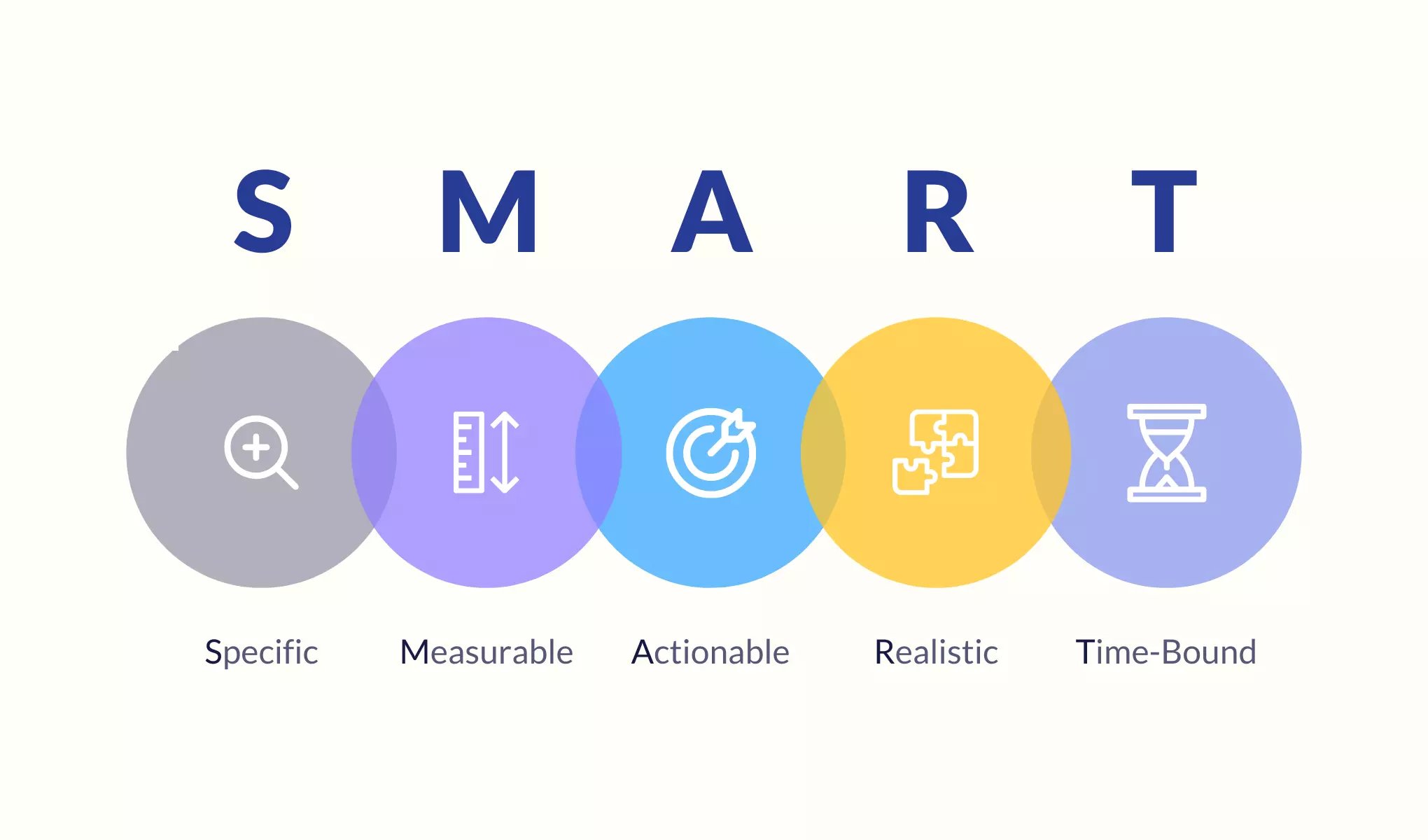
Remember that a good goal needs all five elements. If you skip any one of them, your goals are unlikely to produce the results you hope for.
What you may need help with is applying the SMART formula to your customer service goals, journeys, and touchpoints.
Here’s where some examples may help. Start with some SMART goals:
- Increase our customer satisfaction score (CSAT) from 65% to 75% by Q4, starting in Q2.
- Increase the percentage of subscribers who renew their membership in Year 2 from 30% to 35% in Q3.
Let’s also assume that your return process is one area that could be improved (as in the example above),and you can streamline that customer journey from 7 steps down to 5. Great work!
Now you’ll measure the effect those changes have on customer satisfaction, tweak your approach if necessary, and look at other areas for improvement until you reach your goal.
5. Invest in your team
Don’t forget about your team. Every department, whether they are customer-facing or not, will be part of your new highly-skilled, well-trained, experienced, and empathetic customer service approach. Training should be tailored to each employee’s specific function (remember the shipping clerk and marketing manager from #1? They’ll each be trained according to how their roles touch the customer.)
Don’t leave out any employees. Seek feedback and opinions and seriously consider it all.
Listen to the people who interact with your customers daily. They are one of your most powerful keys to an excellent customer experience. They will have valuable insight into the actions that will delight your customers and ideas for heading off potential problems.
And don’t be tempted to skip this step. If your employees aren’t engaged and involved, your entire strategy is likely to fail.
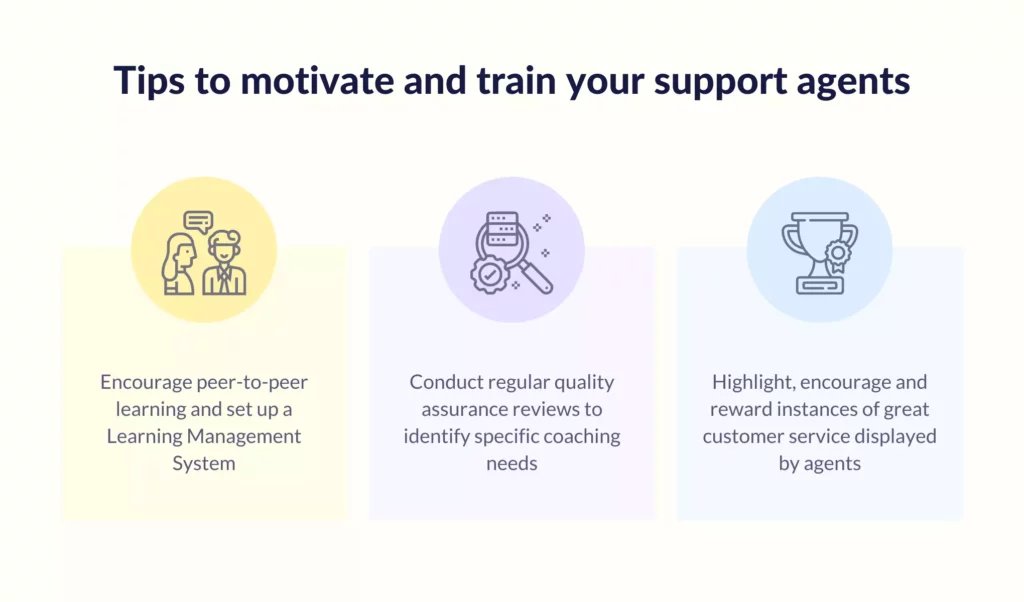
6. Invest in your toolkit
Next, you’ll want to be sure to build a robust customer service toolkit with the technology and processes to support your new strategy. You’ll need features like automations, personalization, easy collaboration, analytics, and more.
Your goal with these tools will be to collect relevant data you can use to evaluate your current customer service and create better customer experiences in the future. Immediately sending post-interaction follow-up surveys is an excellent way to gain insight. With this data, you can also reach out to dissatisfied customers and find out how you can improve, retaining more customers over time.
This kind of interaction creates loyalty and also makes sure that your brand stays top of mind. Regular communication, soliciting feedback, and encouraging engagement are all great ways to foster lifelong customer relationships.
Make sure that your customer support software also provides fast, powerful analytics — and if it doesn’t, you might want to look into Hiver.
Finally, make sure your tools help customers solve problems on their own before contacting you. According to a HubSpot research, at least 90% of buyers say that it’s very important that their concerns and issues are addressed immediately.
If they can easily find an answer in your Knowledge Base or FAQs, not only will they be happier, but you’ll have fewer calls or emails to deal with. You should also consider providing them with live chat on your website so they can get real-time support from you, accompanied by an AI chatbot tool to provide human-like help outside of your customer service working hours
By investing in customer service software like Hiver, you can offer your customer delightful service via email and chat – right from within Gmail. Similarly, when you hire someone to write a business plan, you ensure that expert insights shape your strategic direction, enhancing overall business execution and investor readiness.
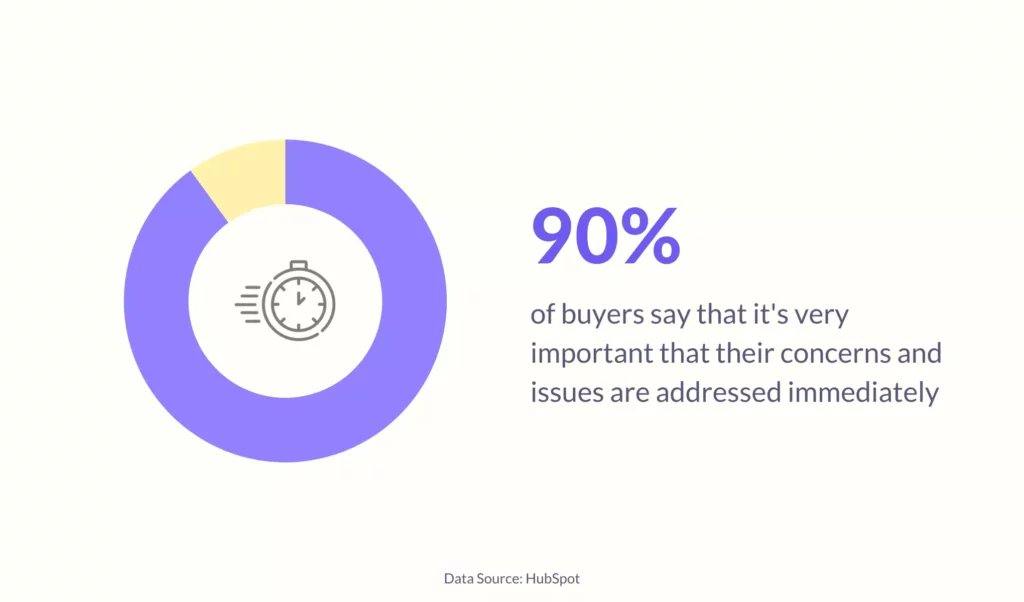
7. Create a consistent feedback loop
Once you start gathering customer feedback, you’ll want to be sure to share it with other teams on a consistent and regular basis. This will allow you to refine and improve your strategy over time.
Your strategy should not be static. Setting up your customer service strategy is only the first step in a continual process. Your strategy will grow and change naturally — and it should. It should constantly evolve with industry trends, the latest CX best practices, your customers’ needs, and your business goals.
No matter how good your product or service is, outstanding and memorable customer service will set you apart. It will help you build lifelong brand advocates.

Measuring the success of your customer service strategy
There are many ways to measure how well your customer service strategy is working. Just beware that you don’t fall down a rabbit hole of metrics that don’t measure the right things or allow you to make a real difference for your organization. Instead, start off with these popular and proven methods, and then only add additional metrics later if they’re needed.
1. Customer Satisfaction Score (CSAT)
There are many ways to measure customer satisfaction, but the customer satisfaction survey is one of the most popular. That’s because it’s straightforward and simple. Customers find it easy to understand, and it’s an extremely useful measure for businesses. In fact, close to 41% of customer service teams say it’s their most important metric, according to Hiver’s Customer Service Benchmark report.

Some of the main advantages of the CSAT are:
- It helps you see and address problems right away
- It typically gets a high response rate because it’s just one question
- It gives you an excellent way to track satisfaction over the entire customer lifecycle
So what’s a good score? It depends on your industry, but 75-85% is generally a good target range. What this means is that 75% of your customers view your business positively as opposed to negatively or neutrally.
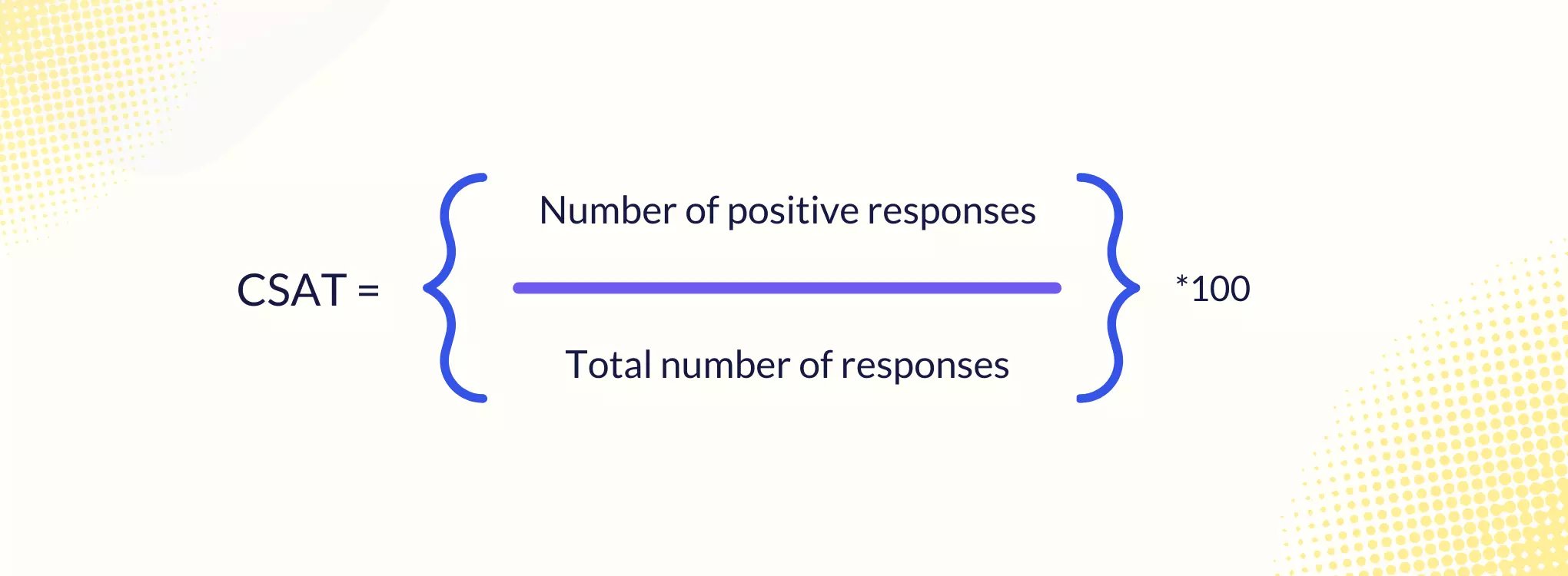
2. Net Promoter Score (NPS)
The Net Promoter Score is a measure of customer satisfaction that asks customers how likely they would be to recommend your business to a friend. Word-of-mouth is still very powerful marketing, with 83% of consumers saying they trust recommendations from friends and family. If your customers aren’t happy enough to recommend you, you must find out why not?
When you track your NPS consistently, you’ll learn how happy your customers are right now and gain insight into evolving trends. You’ll also get a measure of how long they are likely to stick with you and where you may need to improve.
You can learn how to calculate NPS here.
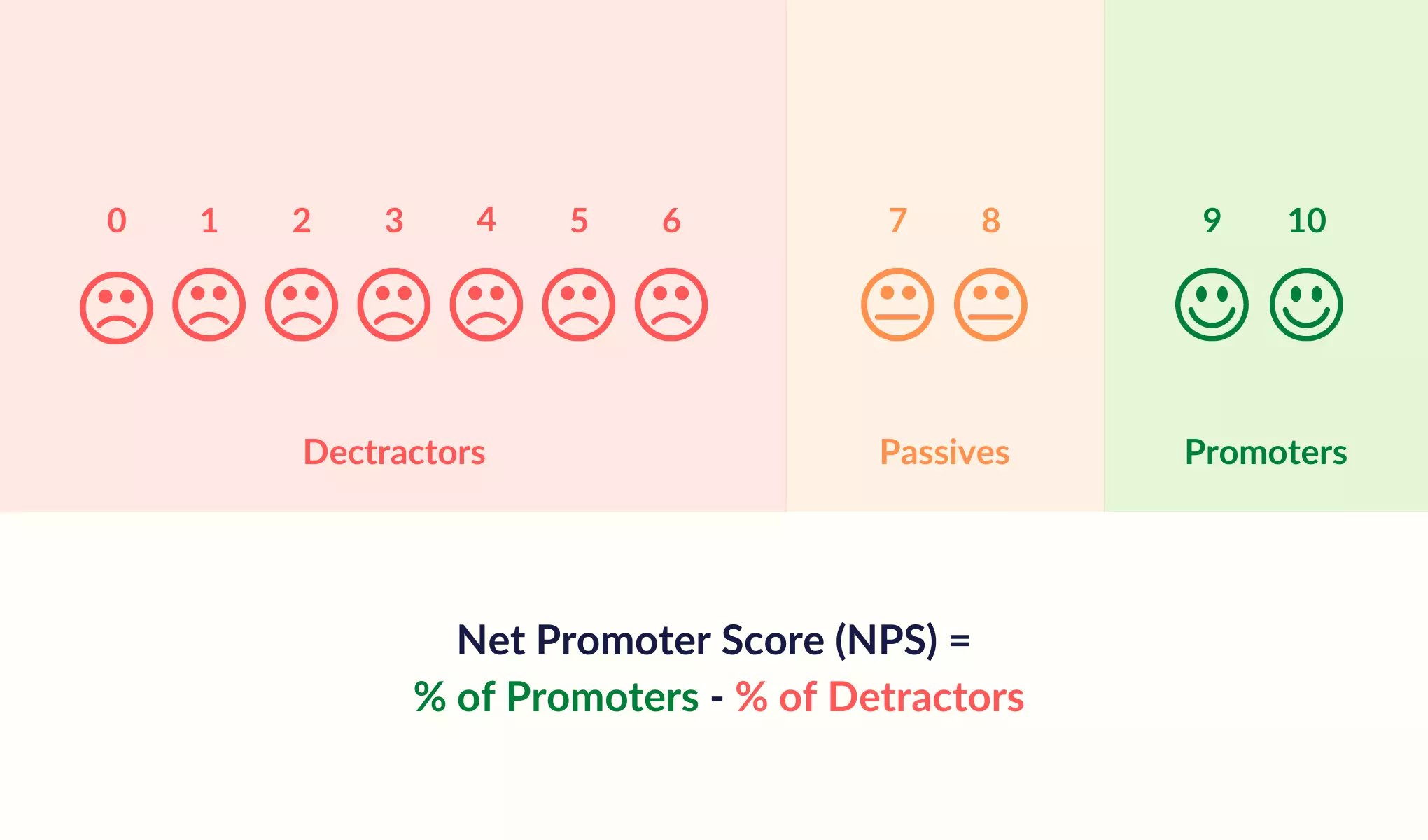
3. Customer Effort Score (CES)
The Customer Effort Score measures user experience; it quantifies how much effort it took for the customer to use your product or service. Ratings are on a scale of “very difficult” to “very easy” and allow you to estimate how long customers are likely to continue using or paying for it.
CES is an important metric because the ease of working with you and/or using your product is a key driver of customer loyalty, which is critical in today’s increasingly competitive business environment.
According to the Harvard Business Review, “When it comes to service, companies create loyal customers primarily by helping them solve their problems quickly and easily.”
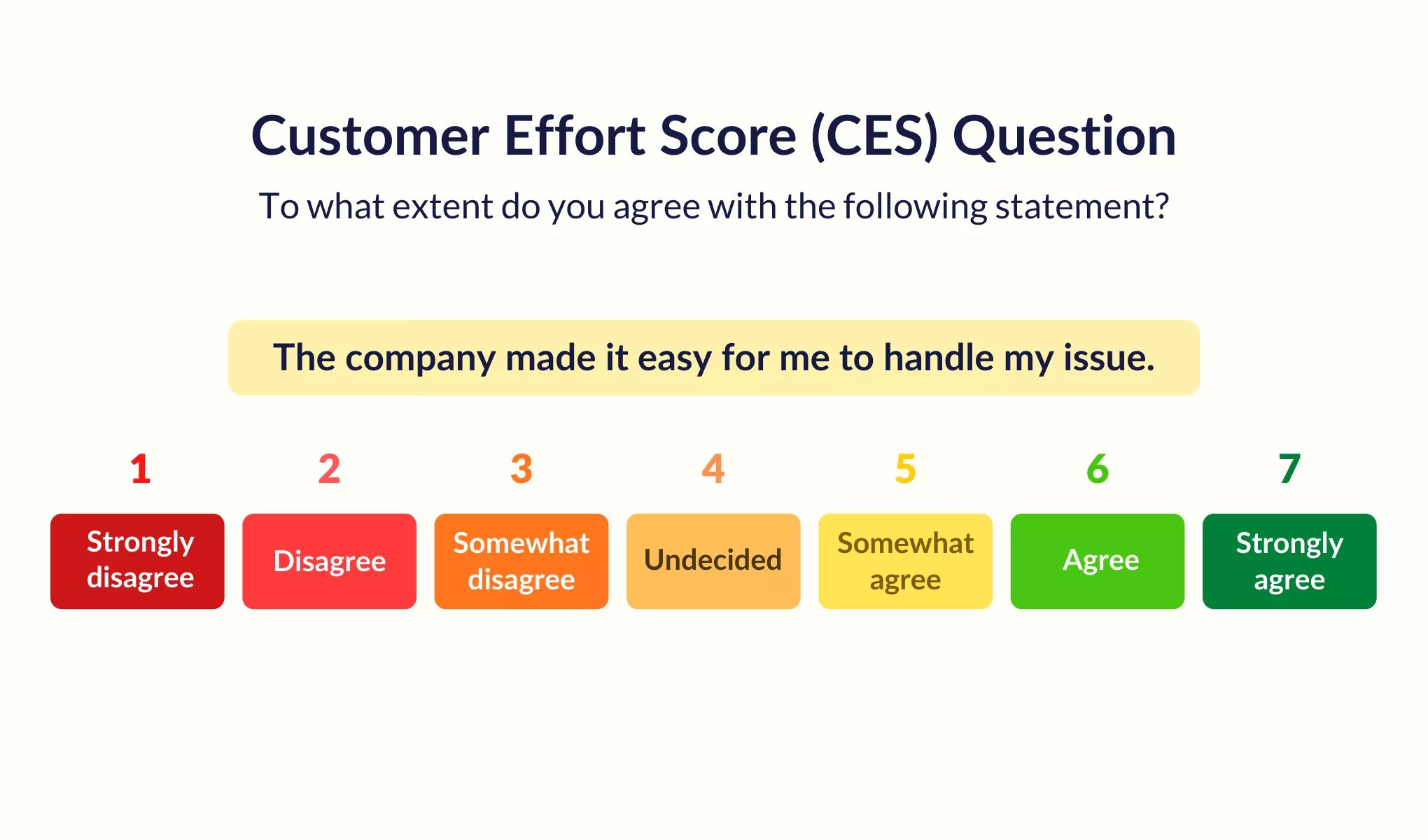
Conclusion
If your goal is to delight your customers, you need a plan — one that everyone from the CEO on down is invested in. By following the steps in this guide, you can have your new customer service strategy in place and be that much closer to building a brand that inspires excitement and loyalty.
Email is only one part of your customer service, but it is an essential one. Consider Hiver’s solutions that make it easy to have natural conversations, increasing customer happiness — along with powerful analytics that gives you the insights you need to create best-in-class customer experiences.
